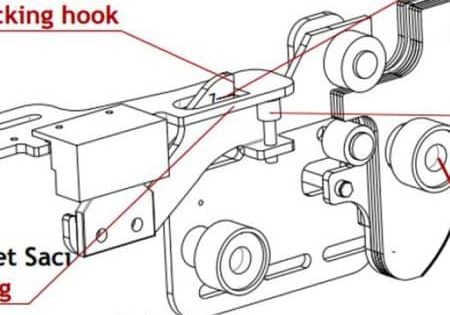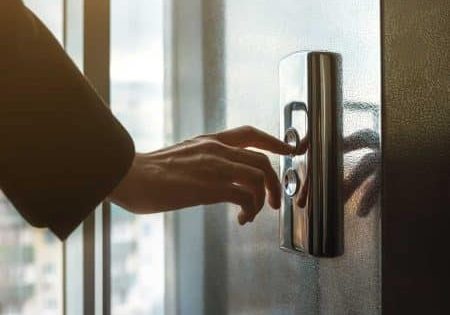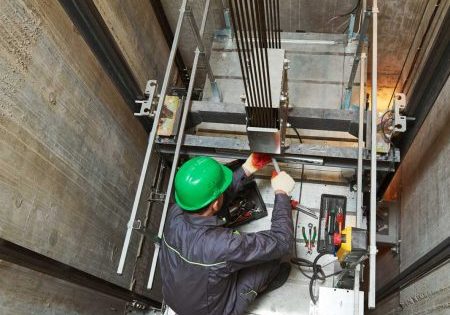A Clear Pathway to Upgrading Existing Lifts
May 15, 2023

In this Readers’ Platform, your author discusses how to make the biggest improvements in safety, accessibility and energy efficiency.
by Claudio Donghi
Lifts, escalators and moving walks are used more than one billion times a day in the European Union. They are the most used type of transportation, and the safest by far. More than six million lifts are in use today in Europe, offering improved accessibility and ease of vertical travel in multi-level buildings. But the increasing number of lifts poses a mounting challenge to building owners. In many countries, more than half of existing lifts are 25 years old or even older. Only a small percentage of these lifts have been modernized to meet the latest state-of-the-art requirements in lift safety and performance. And, as they age, they present a continuing drain on resources to maintain, especially when parts become obsolete.
Aging lifts can be made safer, more energy-efficient and more reliable through improvements such as modernizations and technical updates that increase lift performance and restorations to bring them back to being “state of the art.”
A huge number of solutions are available on the market to upgrade the stock of existing lifts, enhancing their safety, ensuring better accessibility for all users and improving the energy efficiency of buildings. Following a lift modernization, the image, reputation and market value of a building increase. However, building owners need to identify a clear path to undertaking this work to ensure they choose the solution that will offer the most benefits.
The Importance of Making Buildings Greener
The European Green Deal intends to make the EU economy more sustainable by turning climate and environmental challenges into opportunities. With the ambitious goal of becoming climate neutral in 2050, the EU has decided to focus on ensuring transformation of existing EU buildings into a highly energy efficient and decarbonized stock by 2050. The European Commission is, therefore, aiming to at least double the annual energy renovation rate of buildings by 2030, resulting in an estimated 35 million building units renovated by 2030. Lifts can help contribute to these goals by becoming digital, smarter and more energy efficient.
How Lift Modernization Can Help
Although new state-of-the-art lifts will continue to be installed in newly constructed buildings, replacing every existing lift with a new one is not a sustainable or cost-effective solution. Modernizing existing lifts is a much more sustainable option, and can generate significant social, environmental and economic benefits for individuals, society at large and our planet. Modernizing existing lifts provides:
- Safety. Modernized lifts offer a much higher level of safety compared to older equipment.
- Improved accessibility. Better stopping accuracy, wider cars and automatic doors help improve the user experience, especially for the elderly and people with disabilities.
- Energy efficiency. Newer, more energy-efficient components and digital enablers conserve energy usage.
- Circularity. Modernized lifts support the transition to a “circular economy,” thanks to extended product lifetime and the re-use of existing components, preventing waste generation.
- Economic Benefits. Allowing the elderly and people with disabilities to live longer at home will not only improve their quality of life, but also provide significant economic benefits for local authorities. In addition, modernizing an existing lift will ensure reduced operating costs due to better energy efficiency.
- Digitalization. Modern, connected lifts bring remote digital services to buildings, improving their usability, availability and security. Digital solutions increase the attractiveness of buildings and can help cities reduce risks such as the increasing disparity between living areas.
- Health and wellbeing. A modernized lift can offer better sanitization options, such as air purifiers and the touchless operation of lifts through mobile devices.
- Better parts availability. A greater percentage of modernized lifts may relieve current pressures on the availability of spare parts.
SAEL Guidance From ELA
In December 2022, the Safety, Accessibility and Energy Efficiency in Existing Lifts (SAEL) Working Group (WG) of the European Lift Association (ELA) met to finalize a dedicated white paper outlining a list of possible ways to modernize existing lifts. The white paper contains a comprehensive catalog of modernization interventions for each focus area: electrification system, machinery, doors, car, signalization, information and communication technologies, and hoistway — including a description and an evaluation of their impact on safety, accessibility and energy efficiency.
There is a need for technical and social solutions to facilitate everyday life and comply with the requirements of an inclusive society. These solutions will impact all residents of urban societies and people in their work environments, be they young or old, healthy or with restricted mobility.
Lift technology will constantly evolve and change according to the latest developments in the industry. Building owners have a vital role to play in providing infrastructure that is safe, modern, reliable and energy efficient. The ELA SAEL white paper provides useful guidance for building owners and all stakeholders in the lift industry to improve the “mobility chain” in existing buildings through the modernization of vertical passenger transportation, which is present almost everywhere in the built environment.
Get more of Elevator World. Sign up for our free e-newsletter.









